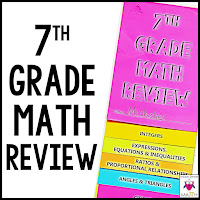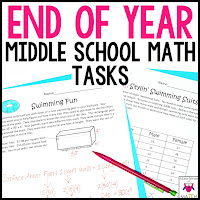10 No-Prep Activities for Middle School Math Teachers
Ever find yourself with a few extra minutes at the end of class and no idea how to use them meaningfully? Those final 5 minutes are valuable—perfect for reinforcing concepts, encouraging math talk, or simply ending the class on a high note. Instead of reaching for busywork or letting chaos creep in, try one of these quick, no-prep activities to make the most of that time. They’re engaging, effective, and require zero planning on your part..
1. Stand Up, Sit Down: Vocabulary Showdown
Call out math vocabulary words (e.g., “coefficient,” “rational number”). If students know what it means, they stand. Call on someone standing to define it. If they’re correct, they stay up; if not, they sit. Keep going—last one standing wins!2. Math Scavenger Hunt (Using the Room!)
Give students a list: Find something with a right angle, find a ratio in the room, etc. Let them find examples around the classroom or in their notebooks.3. Two Truths and a Lie – Math Edition
Have students write two true math facts and one false one about the current topic. Their peers guess the lie. Great for reviewing concepts!4. Speed Chat
Put a problem on the board. Students pair up and take turns explaining how they would solve it. Then rotate! This builds math talk skills fast.5. Math Would You Rather
Would you rather get 10% off $50 or 25% off $20? Use “Would You Rather” prompts to spark quick mental math and deep discussion.6. Estimation Station
Show a picture or object (like a jar of paperclips or a tall building) and ask students to estimate a quantity. Then refine their estimates with math.7. Emoji Exit Tickets
On a sticky note or in a journal, students draw an emoji to represent how they felt about today’s lesson, then write one sentence explaining why.8. Graph It Quick
Give students a weird scenario: Graph how much fun you have vs. how much homework you get. Let them be silly—but they must label axes correctly!9. Mystery Number
You give the clues: “I am a two-digit number. I am divisible by 3. My digits add to 9…” Students guess the number. Keep narrowing down until someone solves it.10. This or That?
Put two equations, expressions, or math models on the board. Ask students: Which is better? More accurate? Easier? Justify your thinking.Why These Work:
These quick wins don’t just fill time—they build collaboration, promote critical thinking, and make your classroom the kind of place students want to be. And the best part? You don’t need fancy materials or hours of prep.
Want more middle school math ideas sent straight to your inbox?
⭐⭐ Join thousands of teachers who get weekly tips, freebies, and inspiration. JOIN BELOW 👇



































